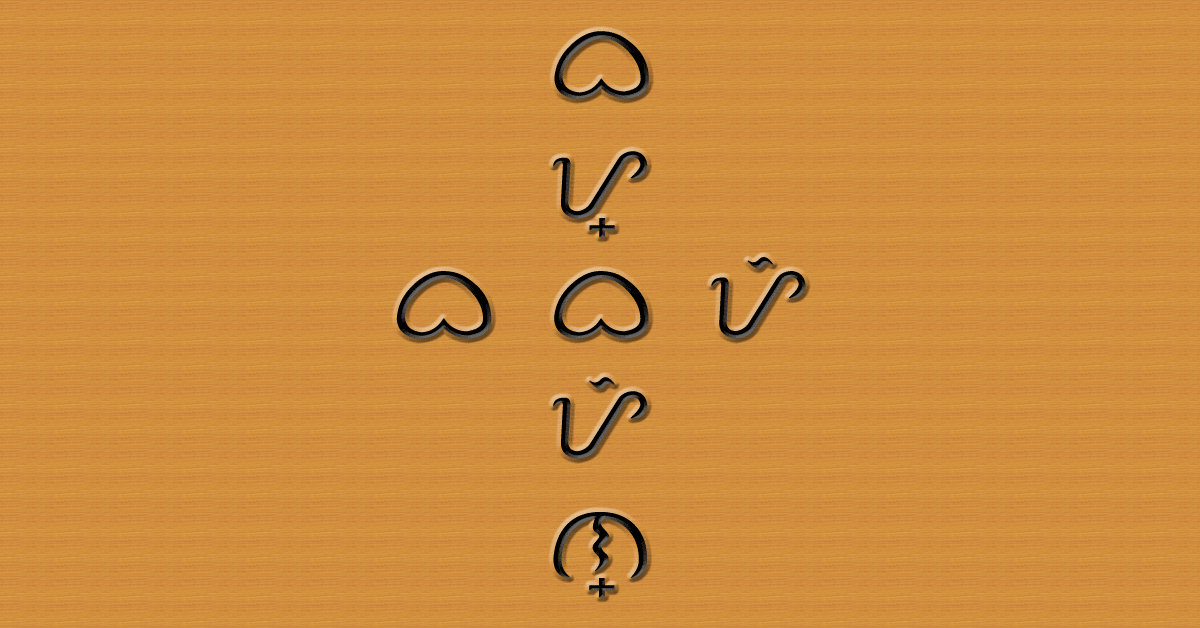Good day mga kaBaybayan! I’ve been seeing a lot of questions by Baybayin beginners concerning which Baybayin to learn first. A lot are confused about the different shapes and versions out there. There are B17, B17+, and modern Baybayin like B18+ and beyond. I will differentiate some of them later.
What Version to Learn
So what version should we really learn first? I would highly recommend learning the Original and Traditional Baybayin and the Reformed Baybayin—which are also called the B17 and B17+ version respectively—first. But please do not get me wrong, I am not against the modernization of Baybayin. However, if you are a beginner, it would be best to start with the basics and traditional first. Once you are an expert with these, you can then learn the suggested modern versions of Baybayin.
Why B17 and B17+?
So why do I recommend learning the B17 and B17+ first? Here’s why:
- It is easier to memorize for a beginner.
- It is the version used by the government on our new Philippine peso coins and bills as well as on the Philippine passport. Even some companies, schools, TV shows and movies are using these versions.
- These versions are already available in digital format and in Unicode input on almost all OS: Windows, Mac, Android, iOS, etc.
- A lot of keyboards are already out there with B17/B17+ making it easier to type and chat in Baybayin online, even Google Keyboard is using B17+.
- These two were the versions used before Baybayin died out in around 18th century. B17 is the original and traditional Baybayin used by our ancestors before the Spanish era. While the B17+ is a Spanish reformed version in 1620, it was however, used to publish a book (Doctriana Cristiana) and was introduced and taught to some natives.
- The modern Baybayins are still suggestions and the government has yet to release any official statement about them.
Again, please do not get me wrong. I am not against the modernization of Baybayin, in fact I have learned some of the suggested modern Baybayin. However, if you are a beginner, it would be best to learn B17 and B17+ first.
Please also note that shape differences of the same character are only due to different typefaces and font styles (and handwriting). It is the same with Latin/Roman letters that have different styles: Times New Roman, Arial, Calibri, bold, italic, etc.
Different Versions of Baybayin
And what are the differences between these Baybayin versions? Let me explain some of them below:
- B17 – is the original and traditional version used before the Spanish era. B17 is a modern name of the original Baybayin and it stands for “Baybayin 17.” 17, because there are a total of 17 characters: 3 vowels (A, E/I, and O/U) and 14 consonants (Ba, Ka, Da/Ra, Ga, Ha, La, Ma, Na, Nga, Pa, Sa, Ta, Wa, Ya). When writing, the final consonants in a syllable are dropped but retained when reading. For example: Bundok is written as (BuDo) as there are no ‘N’ and ‘K’ in the original Baybayin characters. Please also note that Da and Ra have the same character as they are allophones in old Tagalog language. I included a B17 chart below.
- B17+ – is the reformed Baybayin by Fr. Lopez. In 1620, Fr. Lopez introduced the use of a virama or vowel killer called krus-kudlit or sabat (+). This kills the ending vowel ‘A’ sound of any consonant character. With this, it is now possible to write bundok as (Bu-N-Do-K). I also included a B17+ chart below.
- B18+ – started the revival and suggested modernization of Baybayin around the 20th century. This separated the Ra from the Da increasing the number of characters to 18. Some made a new character for Ra, while others just added the “Ra” of Zambales and Bicol (other regions adopted and modified the original Baybayin to better accommodate their language). The little x-virama was also introduced, together with the pamudpod-virama by the Hanunoo.
- MB17+ – is a modern version of B17+. It added diacritics instead of new characters to accomodate foreign sounds thus making it simple, practical and easier to memorize; and preserving the original 17 characters.
- B20 – separated the “i” from “e” and “o” from “u” increasing the total number of characters to 20. Additional kudlit was also added to separate the ending “e” and “i” sound as well as the ending “o” and “u” sound of consonants. Like “be/bi” to “be” and “bi”, and “bo/bu” to “bo” and “bu.”
- B24 – added characters for Fa, Ja, Va and Za increasing it to 24.
- B27 – added characters for Ca, Qa, and Xa.
- B30 and beyond – added characters for Cha, Tsa, and Sha. Other punctuation marks, techniques and symbols for repeating syllables were also added. Characters for Lla and Ña were also added.
I hope this post will clear some of your confusions as a Baybayin beginner or even if you are not a beginner anymore. If you are still confused, please do not hesitate to ask below. Thank you for reading at maligayang pagbabaybay sa iyo! God Bless =>

View Full Size

View Full Size
*The fonts used (Tagalog Doctrina 1593 font and Baybayin Lopez font) are made by Paul Morrow which he based on the Baybayin typefaces found in the 1593 Doctriana Christiana and 1620 Doctriana Cristiana. You can download them on his website for free.

